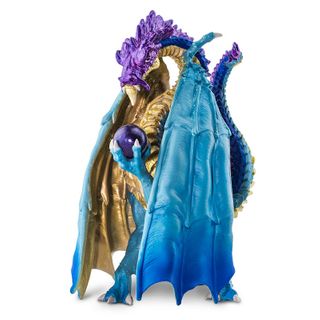
Description
Dunkleosteus was a huge (about 20 feet long and about one ton in weight) carnivorous fish that lived during the Devonian Period (380-360 million years ago throughout the world’s oceans of the time. With its large jaws and massive tooth plates, it would have been a top predator in its habitat.
- Scientific Name: Dunkleosteus, named for the late David Dunkle, a well-known paleontologist and curator of the Cleveland Museum of Natural History, which has some of the best collections of Dunkleosteus in the world.
- Characteristics: Dunkleosteus belonged to a group of extinct primitive fish called placoderms. Unlike all living fish, the head and front half of the body of placoderms are covered in massive bony shields. They did not have teeth, but rather huge bony plates in their jaws with sharp shearing surfaces that worked like giant scissors. Dunkleosteus used its powerful jaws and tooth plates to cut through the largest prey, and would have occupied the same position in the ecosystem that large sharks do today.
- Size and Color: This model is 7.25 inches long and 3.25 inches wide. We aren’t sure what color Dunkleosteus was, but as is the case with many predatory fish, it would likely have a darkly colored upper surface and lighter underparts with camouflage mottling on it sides that would have made it difficult for its prey to see it approaching.
- The Dunkleosteus is part of the Wild Safari® Prehistoric World collection
- All of our products are Non-toxic and BPA free
History
Unlike most fossil fish, Dunkleosteus has become well known to the public through its appearances in films like ‘Sea Monsters – a Walking with Dinosaurs Trilogy’ and the television program ‘River Monsters.’
- Size in cm: 18.5 L x
- Size in inches: 7.28 L x
- UPC: 095866283308








